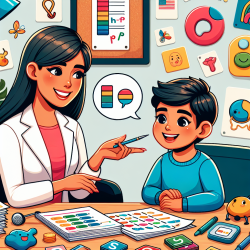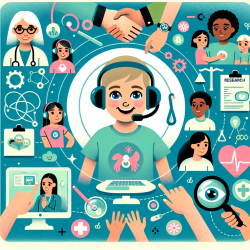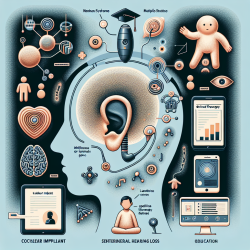Introduction
In the field of speech-language pathology, understanding the intricacies of reading and language disorders is crucial for developing effective interventions. The research article "Reading and Language Disorders: The Importance of Both Quantity and Quality" provides valuable insights into the genetic underpinnings and clinical manifestations of these disorders. This blog aims to translate these findings into actionable strategies for practitioners, particularly those involved in online therapy services like TinyEYE.
The Genetic Basis of Reading and Language Disorders
The research highlights the genetic complexity underlying disorders such as dyslexia and Specific Language Impairment (SLI). While only a few genes have been implicated, their characterization offers novel insights into the biology of these conditions. For practitioners, this underscores the importance of considering genetic factors when assessing and planning interventions for children with reading and language disorders.
Clinical Implications and Strategies
Practitioners can enhance their clinical practice by integrating the following strategies based on the research findings:
- Comprehensive Assessment: Conduct thorough assessments that consider genetic predispositions alongside environmental factors. This holistic approach can lead to more personalized and effective intervention plans.
- Multidisciplinary Collaboration: Engage in collaborative efforts with geneticists and other specialists to gain a deeper understanding of each child's unique profile. This can facilitate the development of targeted therapies.
- Use of Technology: Leverage online therapy platforms like TinyEYE to implement data-driven interventions. These platforms can provide tailored support and track progress over time, ensuring that interventions are both effective and adaptable.
Encouraging Further Research
The research article emphasizes the need for larger, more diverse cohorts to fully understand the genetic and environmental interactions in reading and language disorders. Practitioners are encouraged to contribute to ongoing research efforts by participating in studies and sharing data. This collective effort can lead to breakthroughs in diagnosis and treatment.
Conclusion
Understanding the genetic and clinical aspects of reading and language disorders is essential for improving outcomes for children. By integrating research findings into practice, practitioners can develop more effective interventions and contribute to the broader body of knowledge in this field. For those interested in delving deeper into the research, the original paper provides a comprehensive overview of the current state of knowledge.
To read the original research paper, please follow this link: Reading and Language Disorders: The Importance of Both Quantity and Quality.










